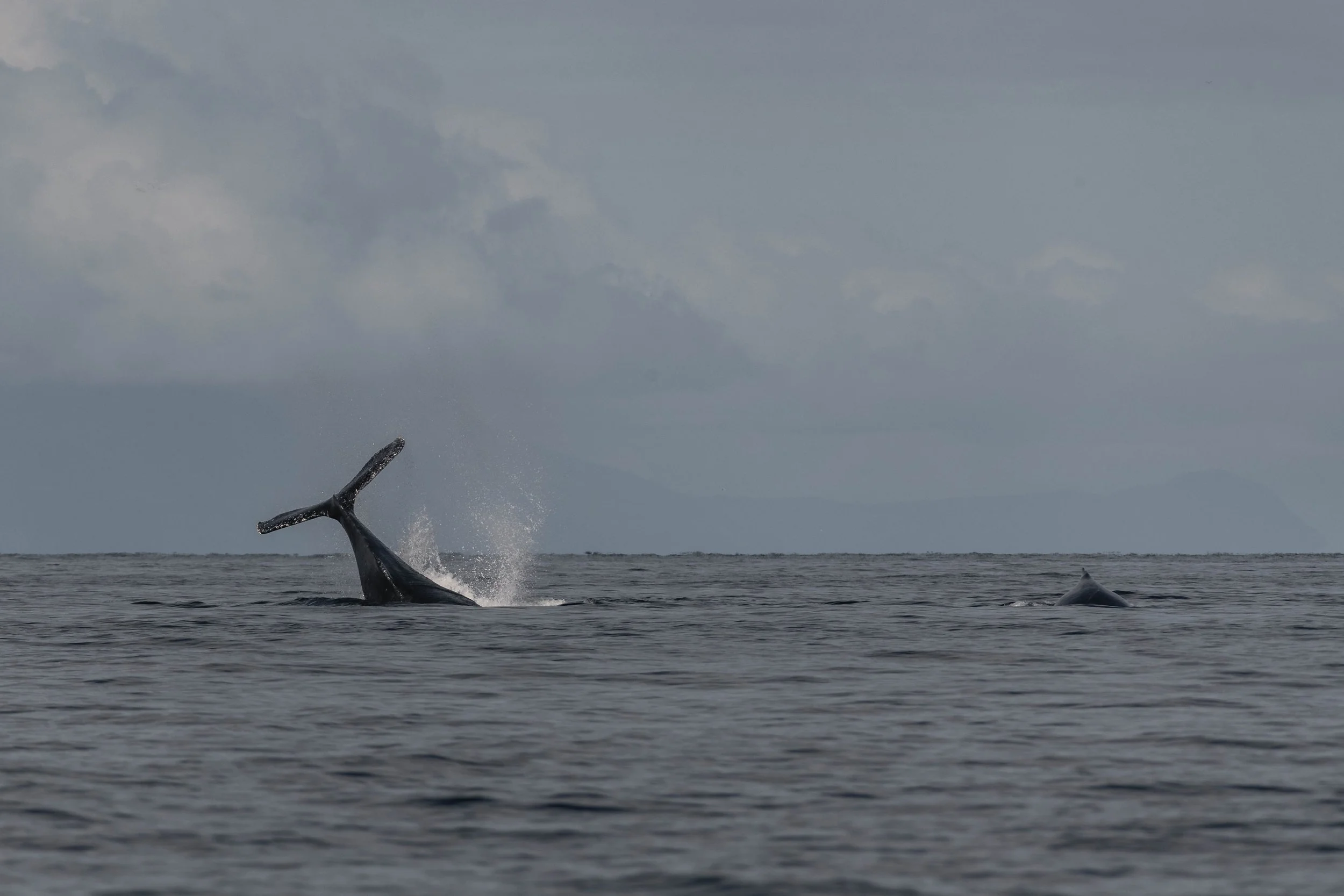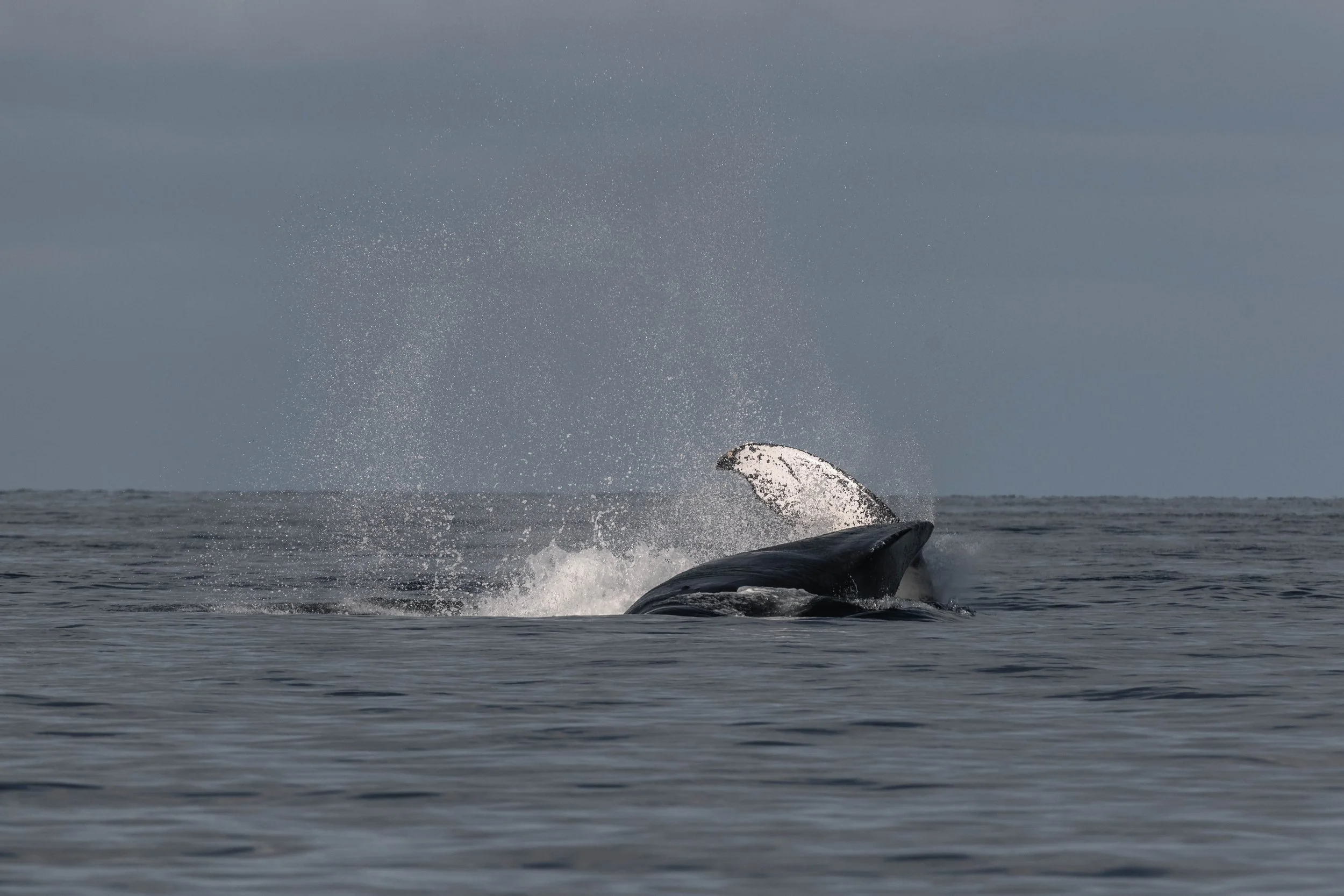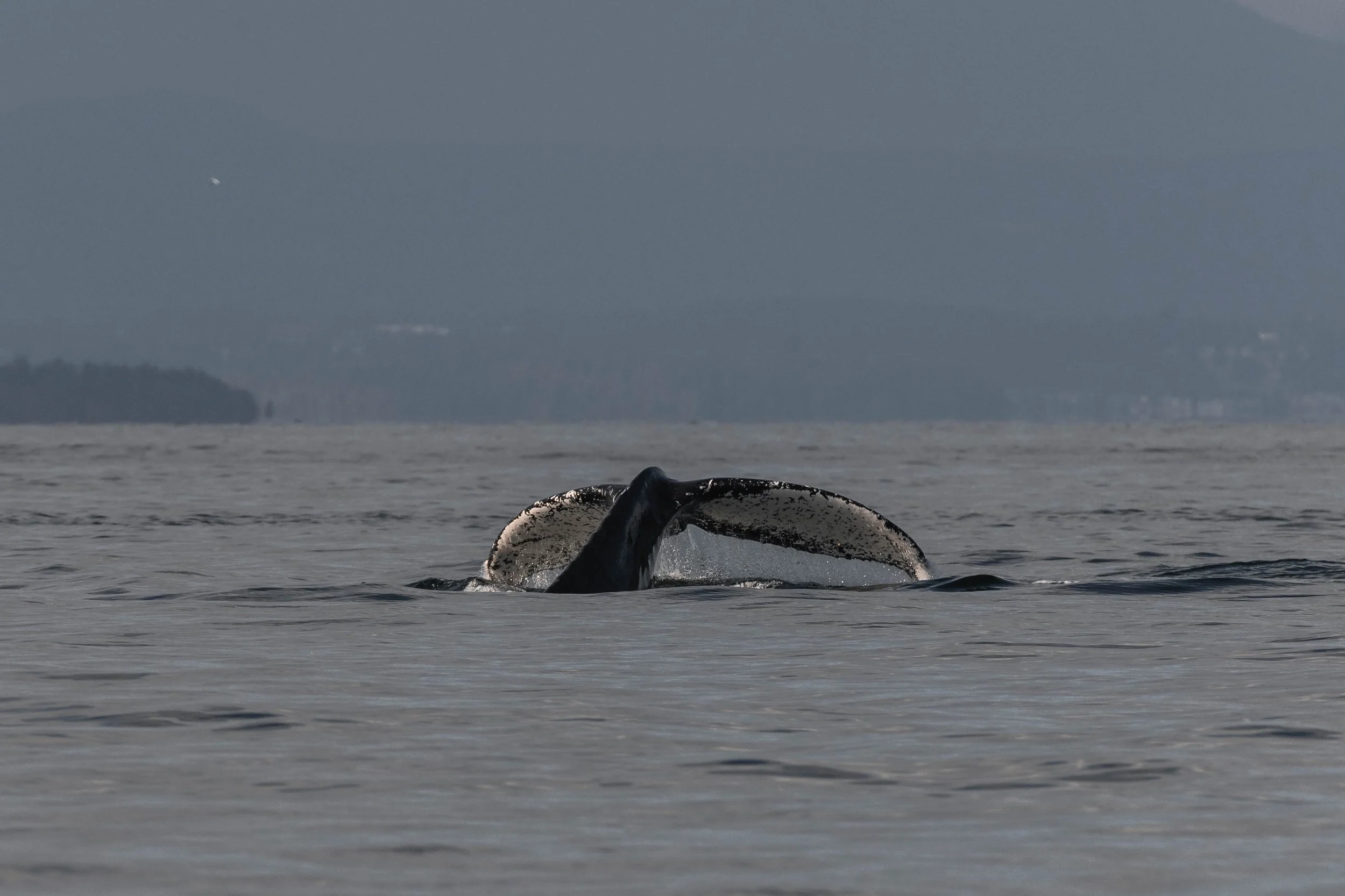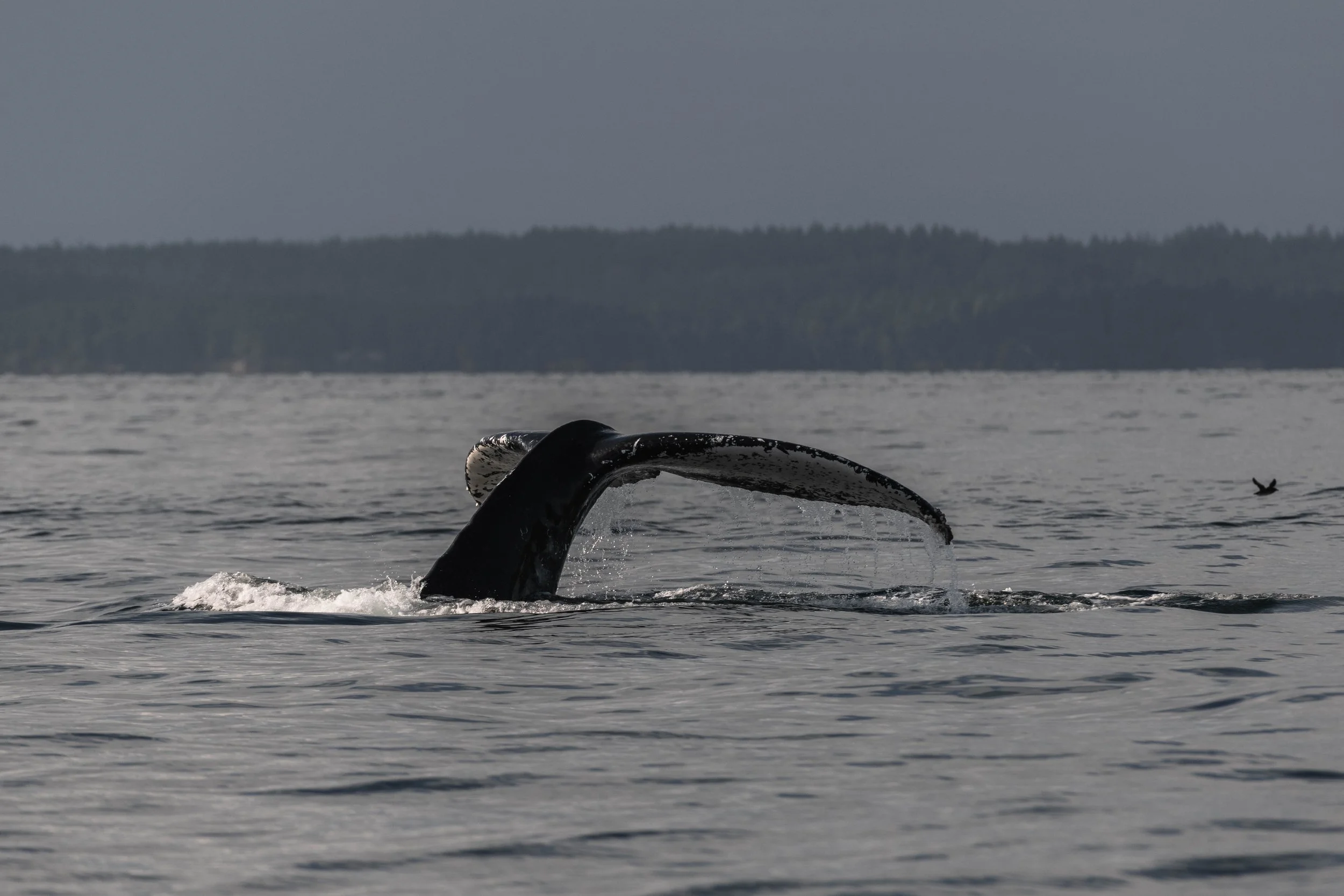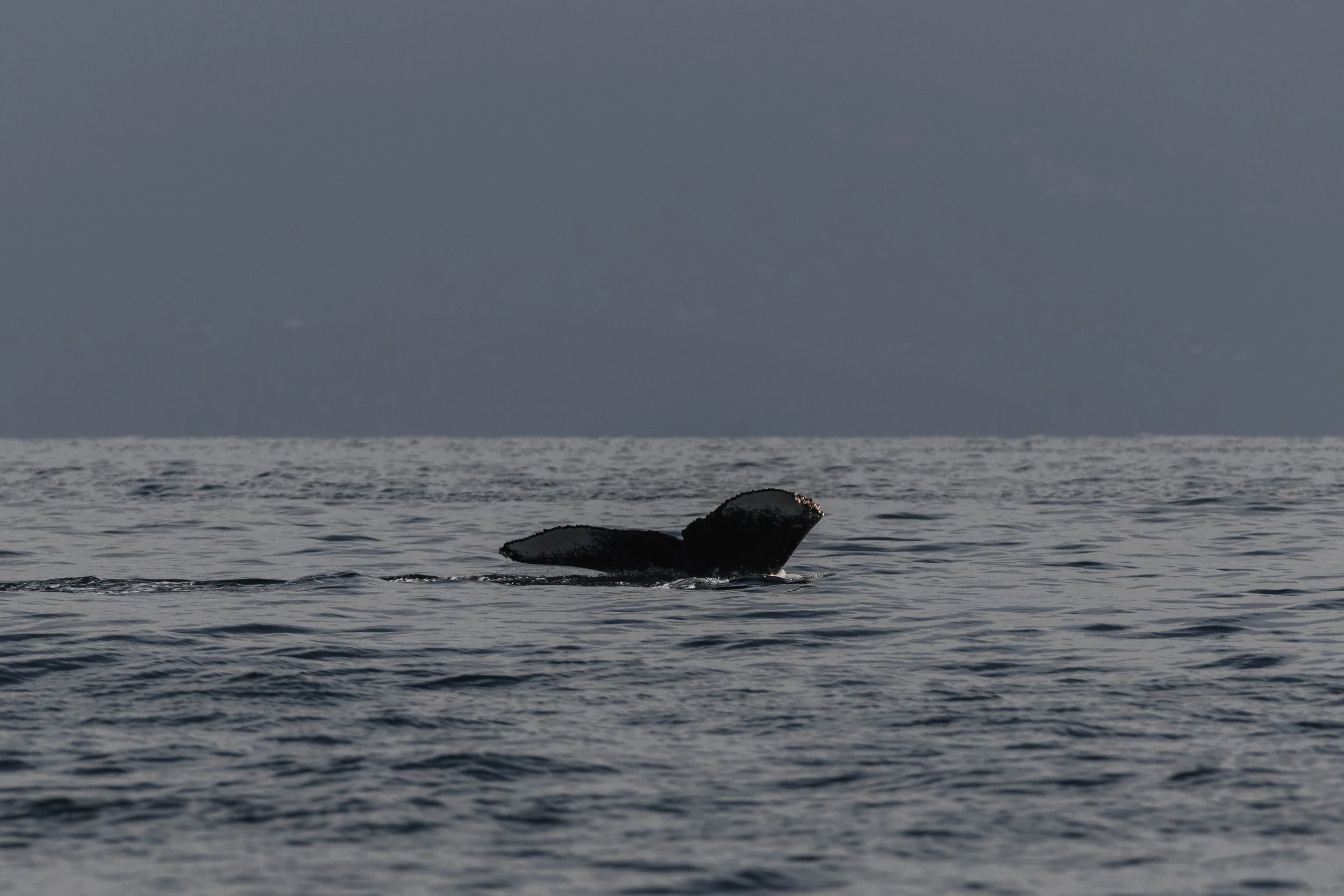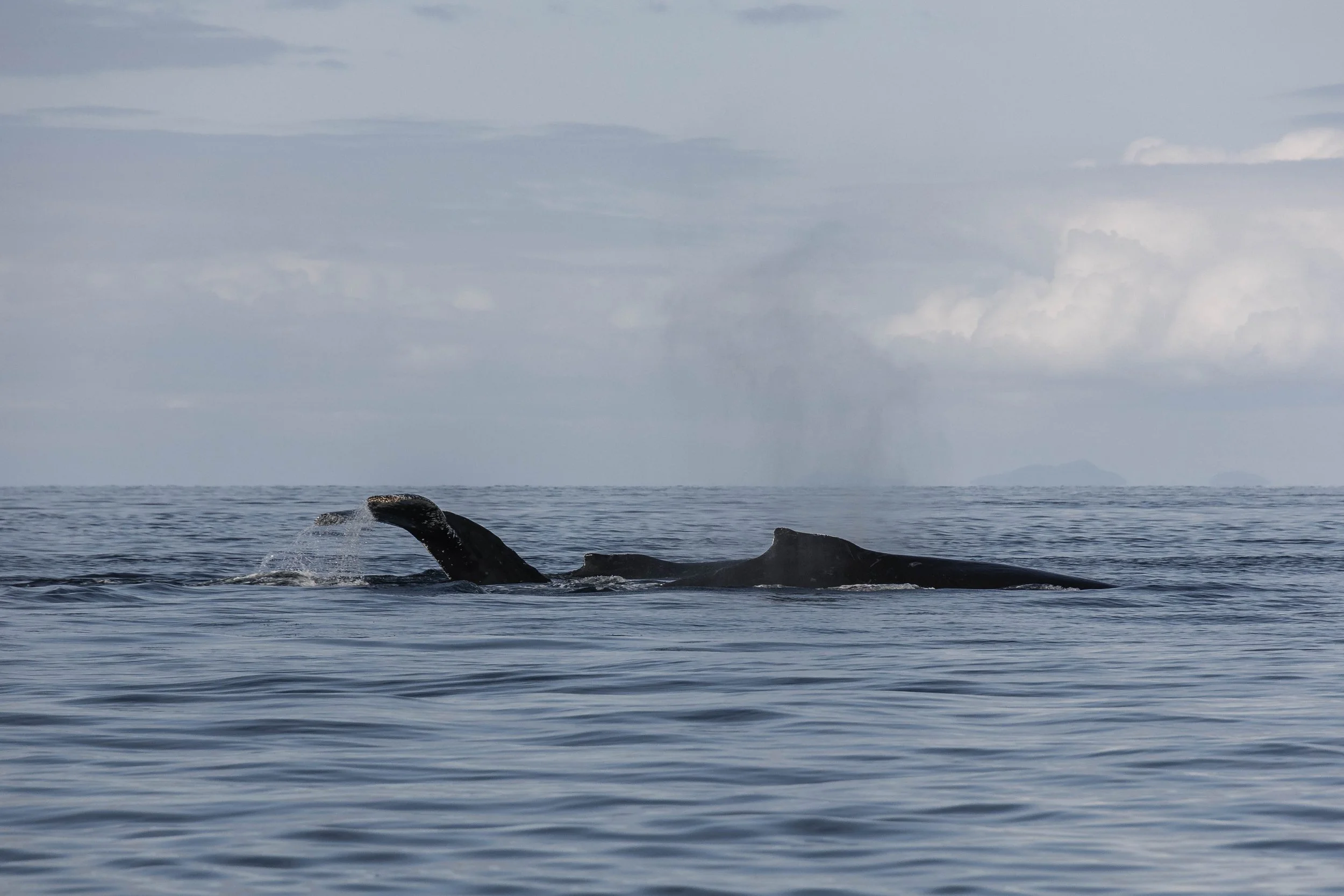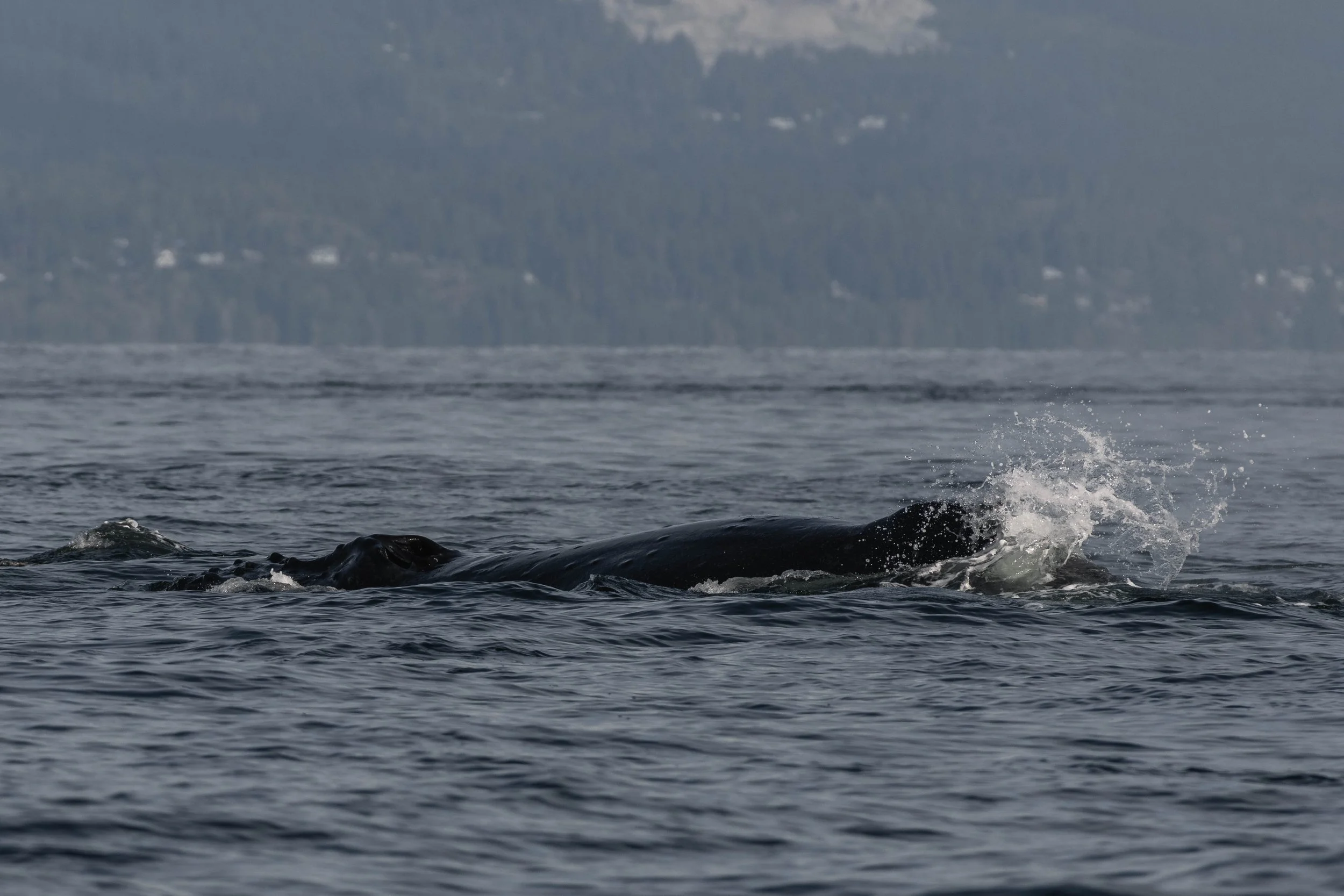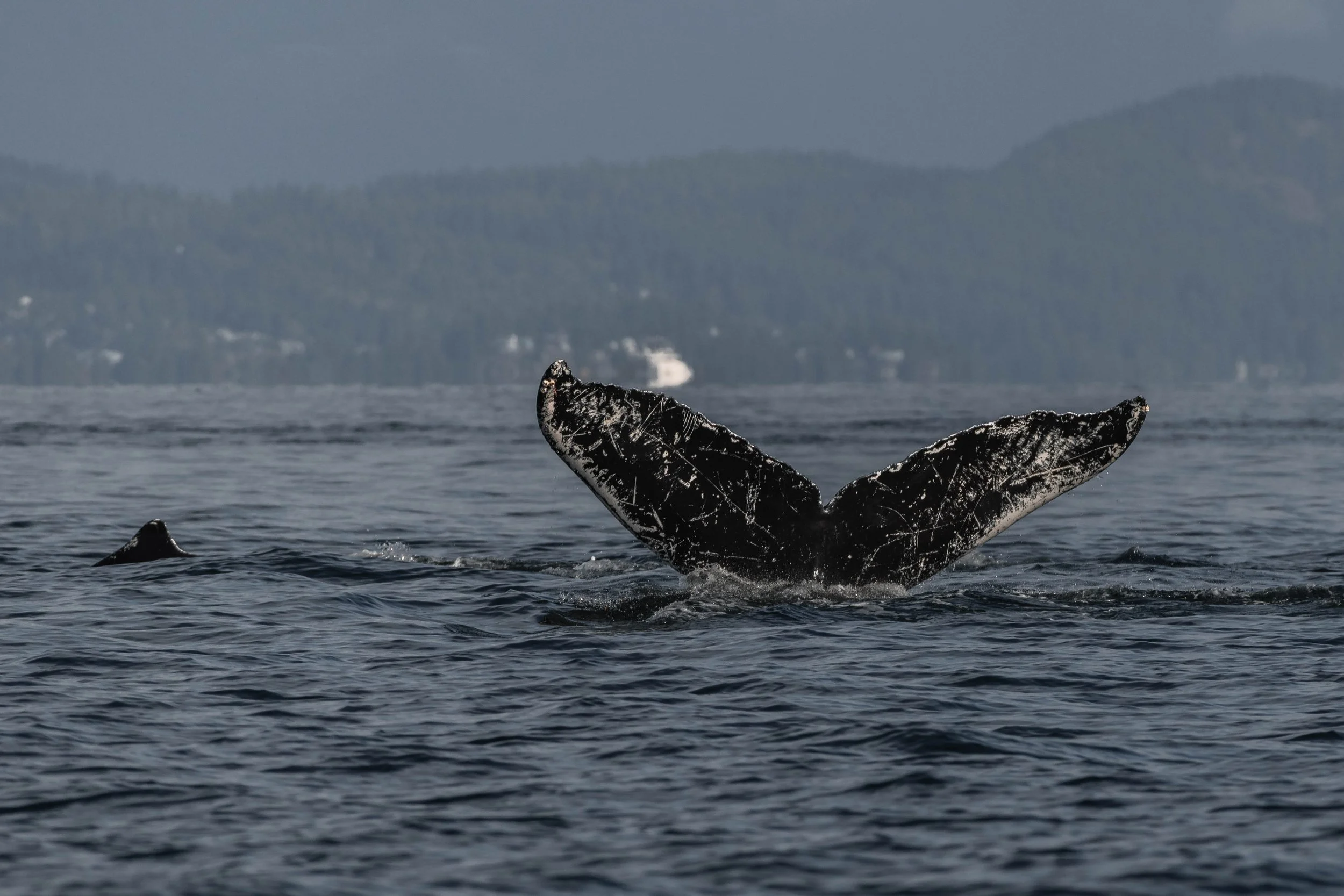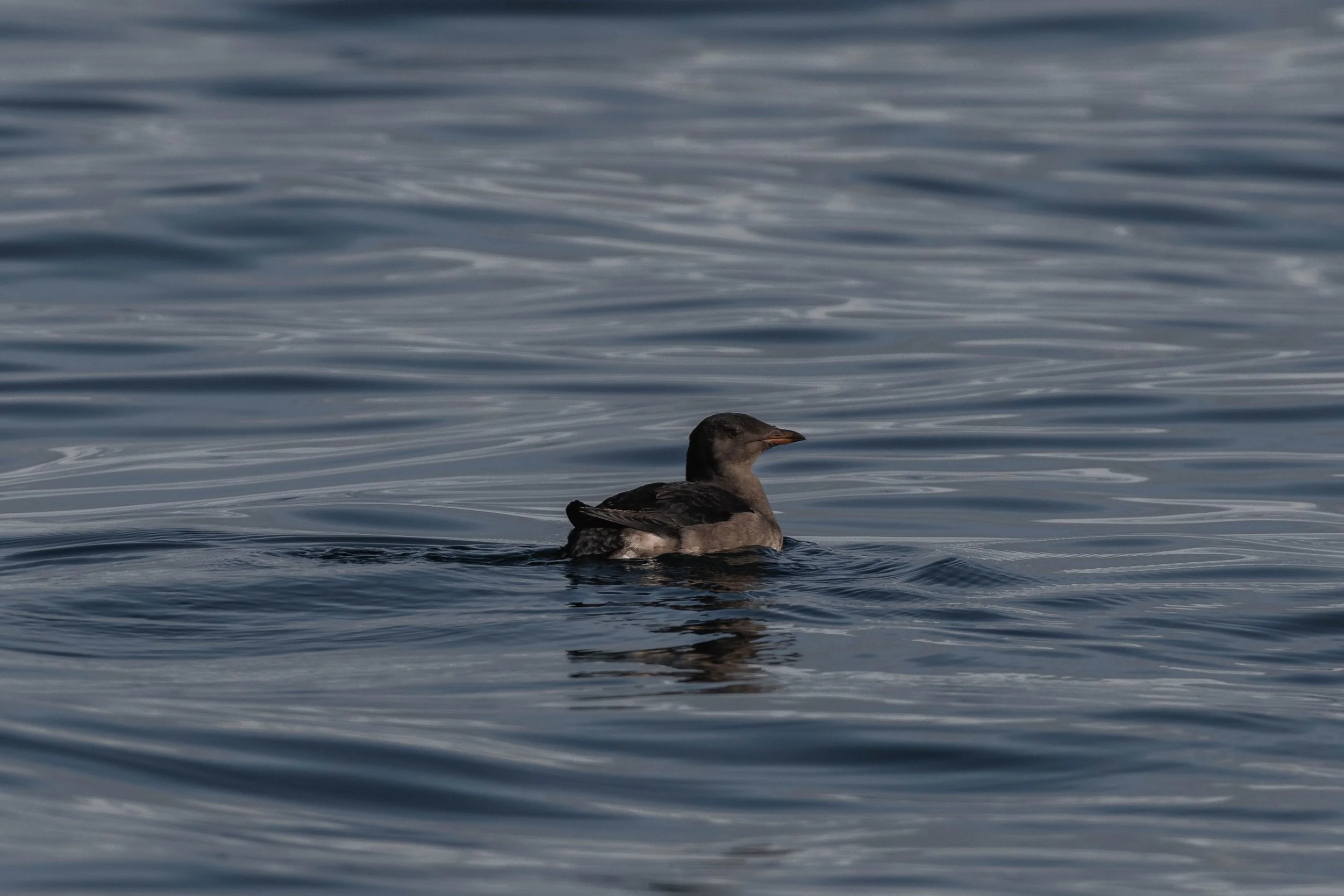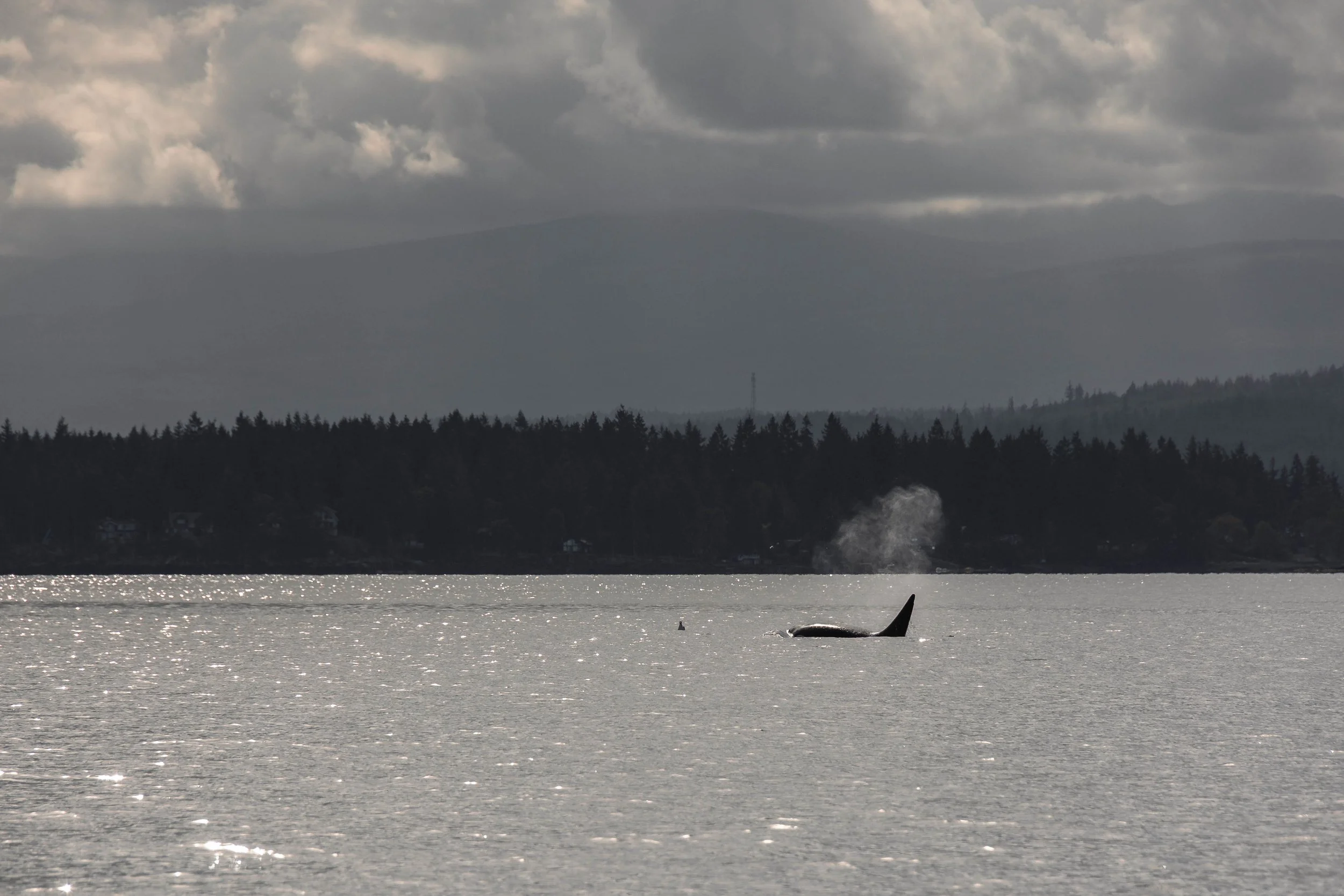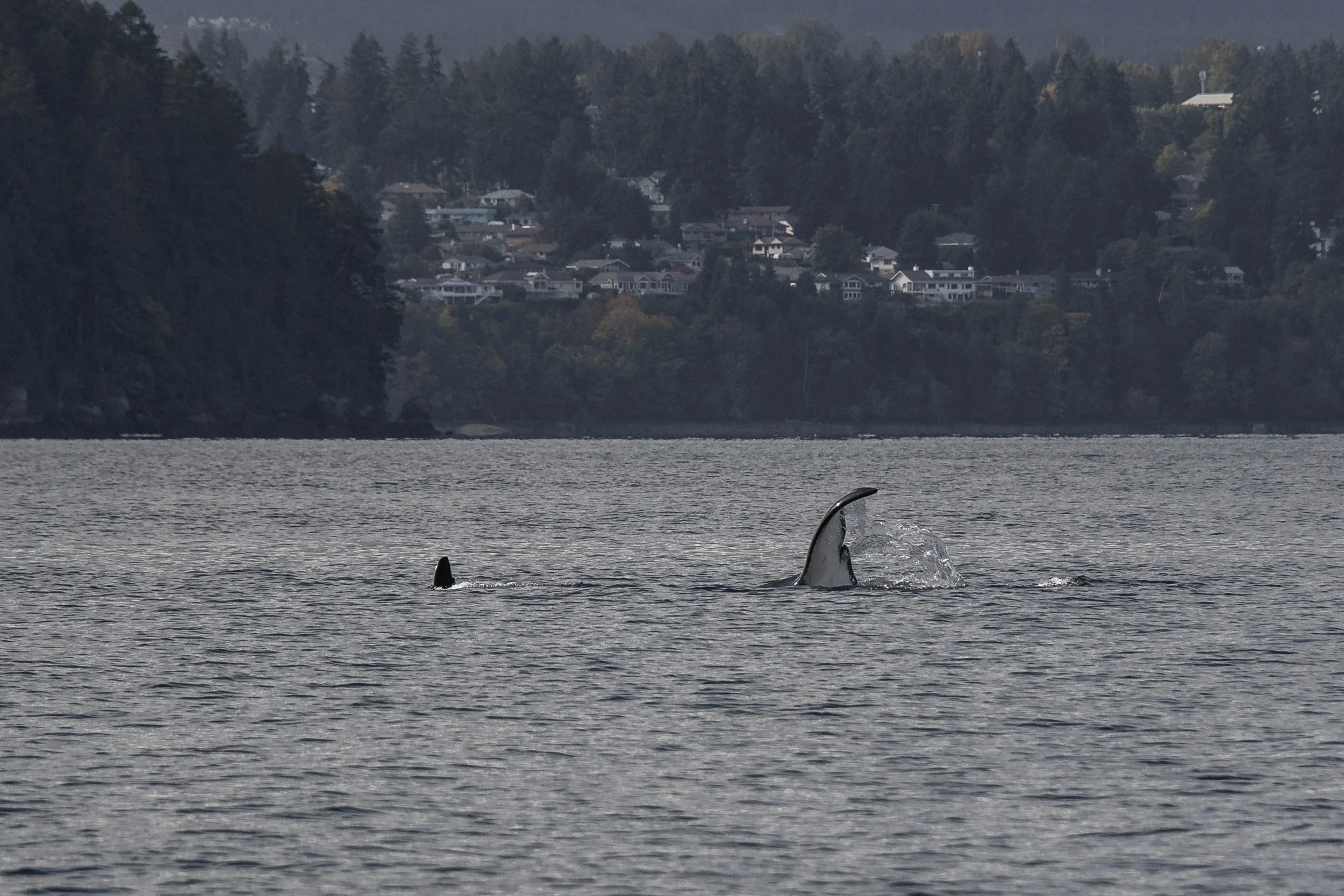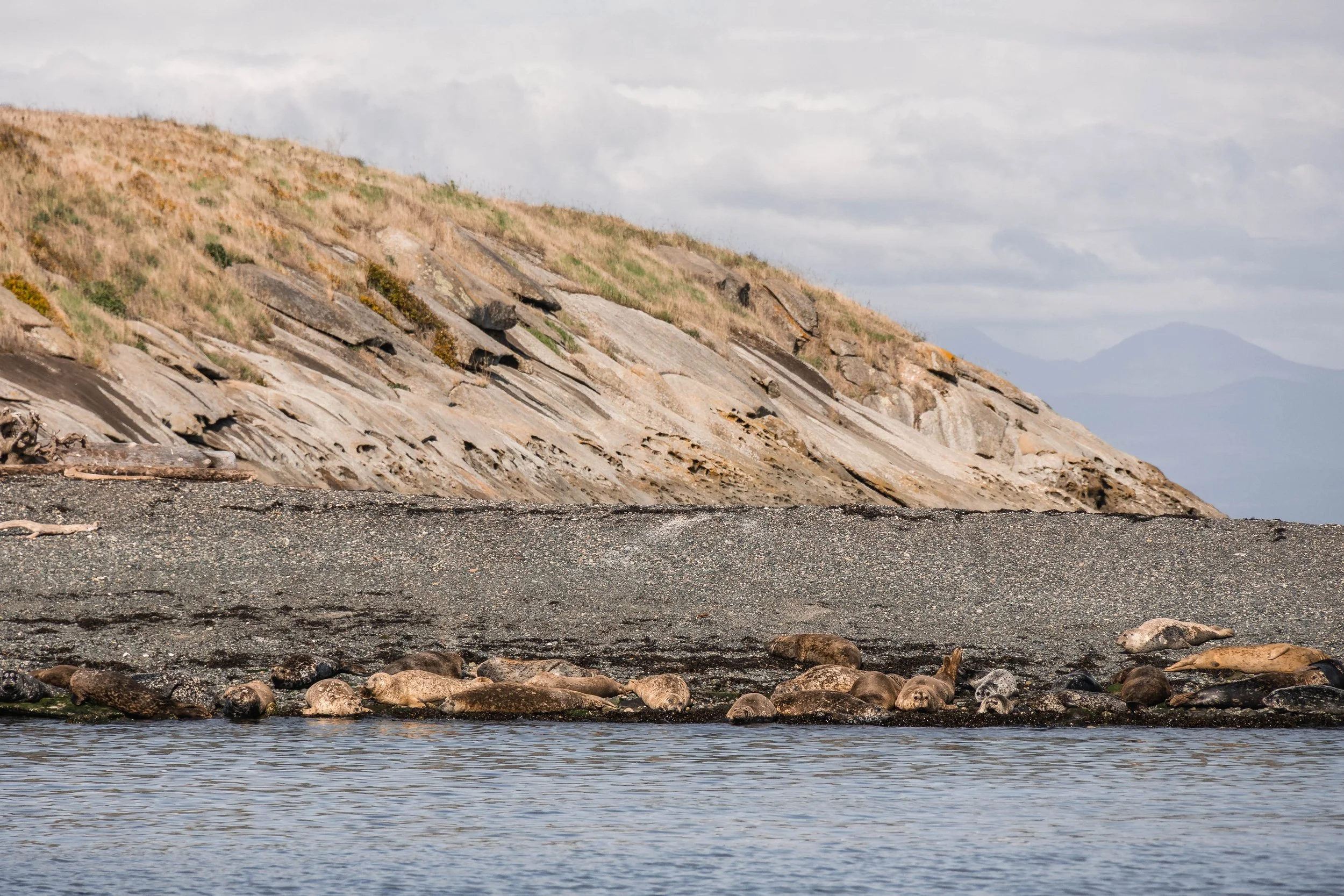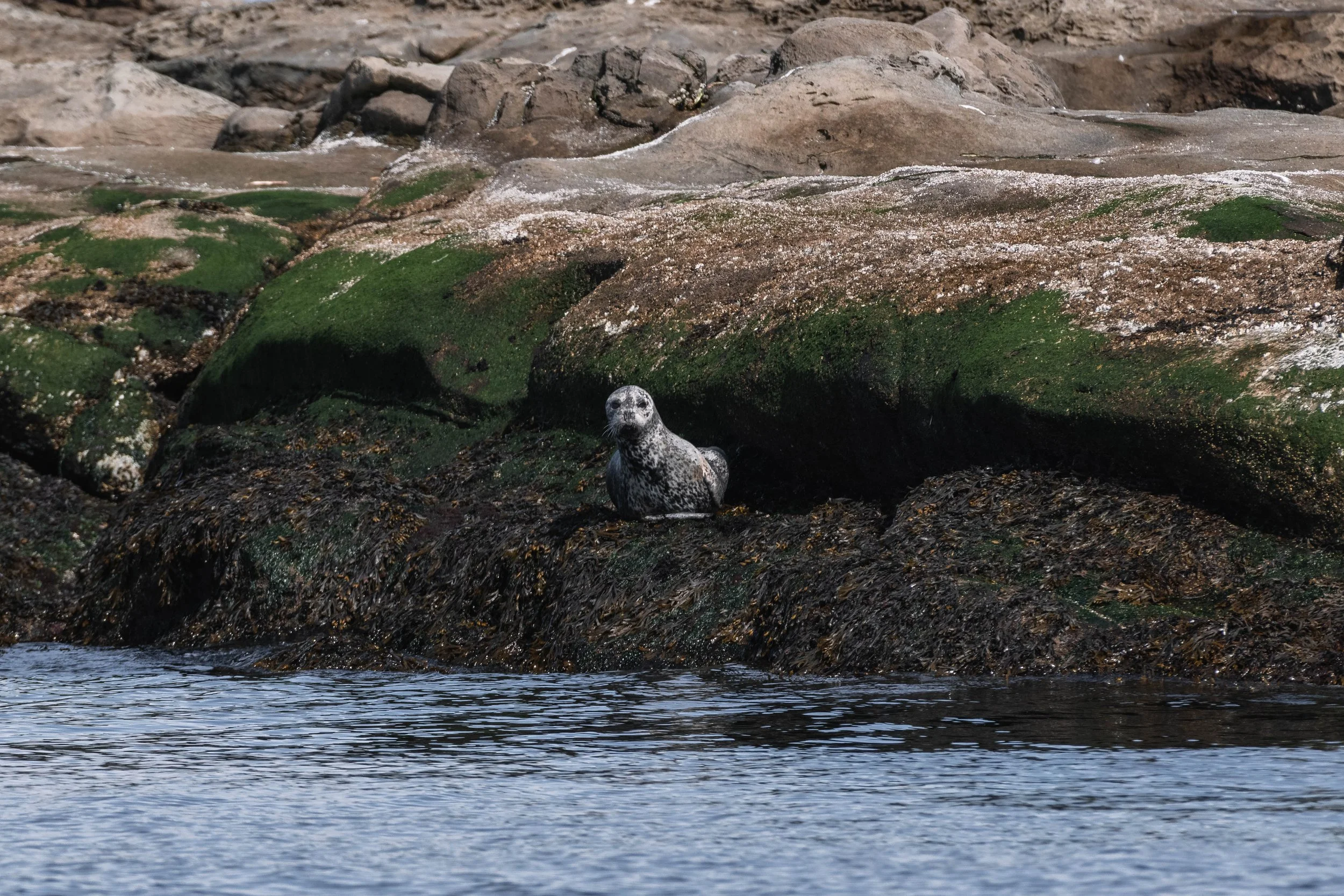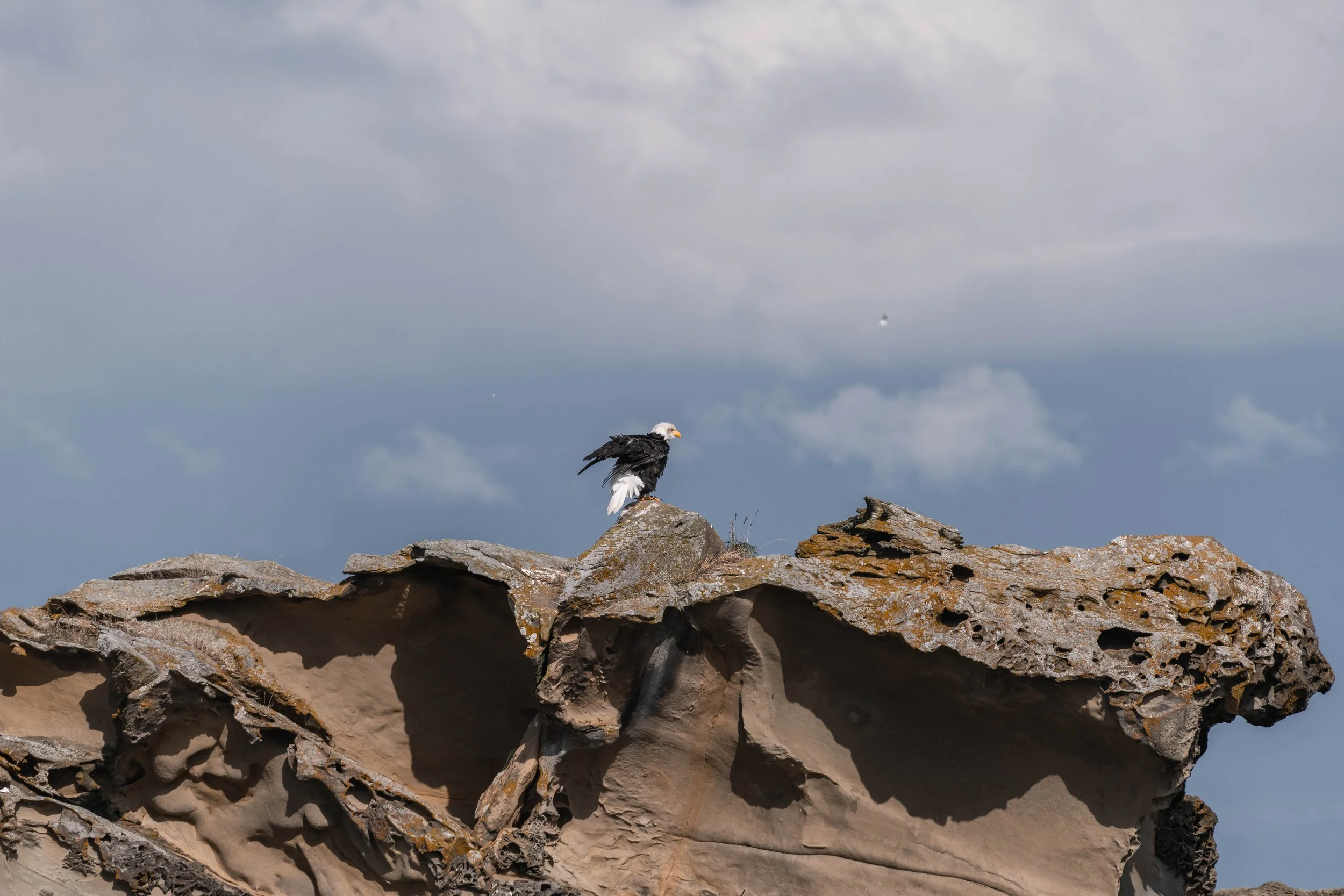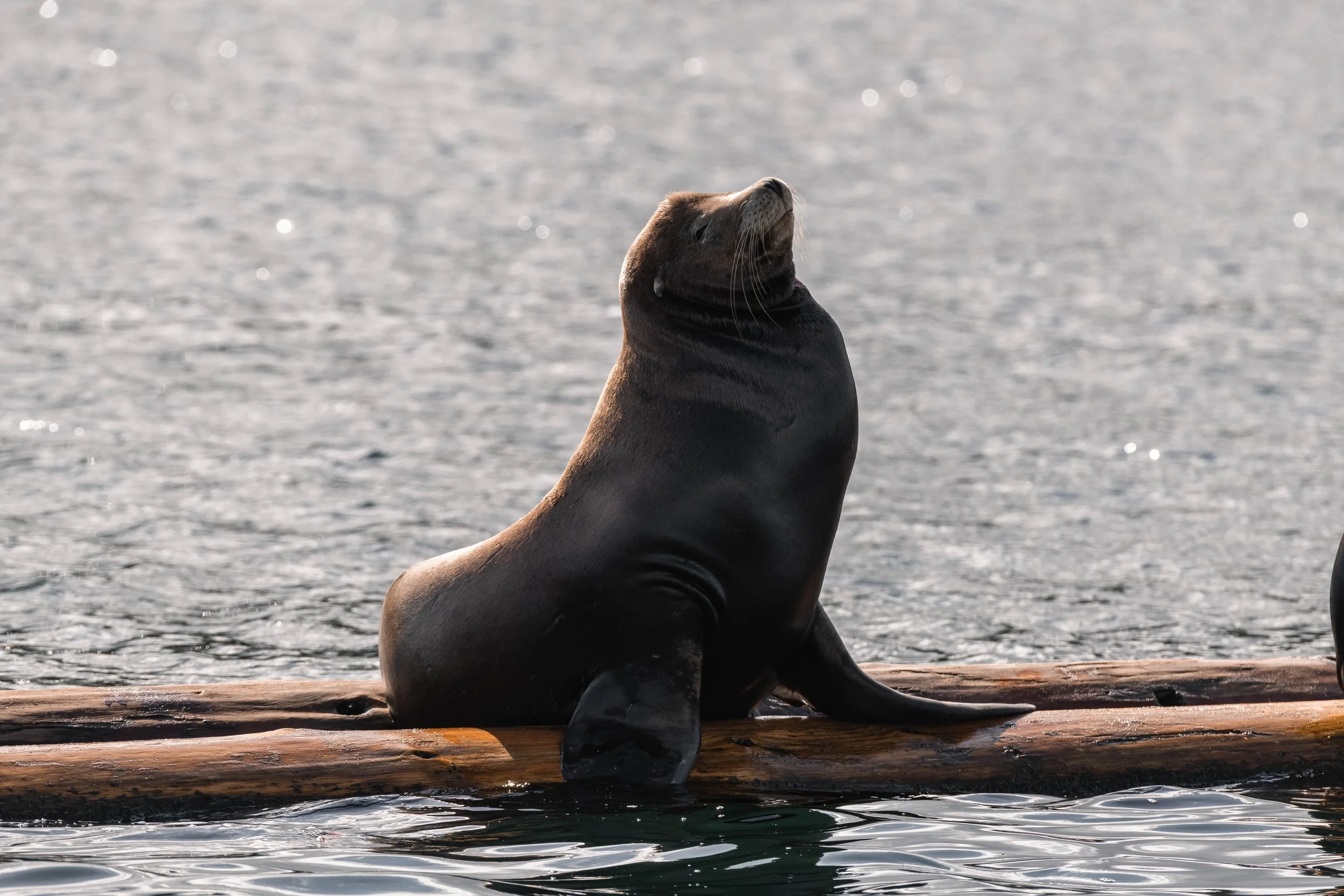October 8, 2025 - Humpback Soup and the T060 Brothers
It was a classic west-coast day as two of our vessels left Nanaimo and headed into the Salish Sea in search of whales. Both boats went out into the open waters of the Strait of Georgia, a vast section of water that separates the mainland of BC from Vancouver Island and the smaller Gulf Islands. This area is a hotspot for marine activity, not just as a busy shipping area but also for wildlife! Multiple factors contribute to the high productivity in the coastal waters of British Columbia, including the many rivers feeding into the Strait, which bring nutrients and sediment that serve as an essential influx to the ocean. There are also geological features here that help to mix the water column, pushing the cooler, deeper water to the surface. The Gulf Islands themselves contribute to this, as their rocky shores move the water around, but the islands' formation also left a shelf a mile or so off from the islands, which will also contribute to this important mixing. The narrow channels between the islands also mix the water, and the currents there introduce more oxygen than would normally be present without the tides changing and creating rapids. All of these, and more, combine to make BC’s waters some of the richest in the entire world!
This high productivity brings a lot of wildlife here to feed, including what our boats found first: the Humpback Whales! It was a pair first spotted travelling together just north of Thrasher Rock, near Gabriola Island. These two whales seemed to be travelling through the area, moving relatively quickly until they found the next food hotspot, where they began feeding. From the brief looks we had at their tails, we identified these two as Jackson (BCY1025) and Velvet (BCY1186). Jackson is a company favourite, given her very striking fluke pigmentation. She is named for the speckled pattern on her tail, which reminds people of the works of Jackson Pollock, an abstract artist who specialized in paintings executed with a splashing technique. Looking at Jackson’s tail flukes, you will understand the inspiration behind the name! As time went on, as we watched these two, it seemed Jackson developed a bit of extra energy, as she did a few cartwheels at the surface (throwing her tail from side to side)! This impressive display of power from Jackson was short-lived, and our time with them was up, so we continued on.
It didn’t take us long before we spotted the next group of whales: 5 of them travelling together to be exact! It was Snoopy (BCY0770), Bump (BCY0771), Magpie (BCY1124), Honu (BCX1865), and Frankenstein (BCX1358)! Seeing humpbacks in such a large group isn’t very common, although as we get into the fall months, we start to see it more frequently as they start to prepare for their migration. As we watched them, it seemed there might be some practice going on, as the whales appeared to engage in competitive behaviour. They were moving quickly in very close quarters and doing more surface activity than the humpbacks usually do in our waters. However, there wouldn’t be any actual breeding behaviour here in BC (they head south to do this), but that doesn’t mean that they might not take advantage of the time to practice. This has been observed from time to time in our waters, especially towards the end of the humpback season, with the adults still present. Soon, all of these whales will leave us here in BC and start their southern migration, heading to either Hawaii or Mexico, depending on the individual. Some whales, like Frankenstein, have been matched to both breeding grounds, but that is rare. Most of the time, humpbacks have high site fidelity, meaning they return to the same area each year, both in the southern breeding/calving grounds and their northern feeding grounds.
While we watched in excitement at all the activity from these humpbacks, we got word of a sighting from shore back towards Nanaimo, it seemed that a pair of orca were spotted not too far from home. Although it was tough to leave the humpbacks behind, we decided to try for double species on this trip and headed towards the report. Lucky for us, we had success after not too much searching, spotting the towering dorsal fins of two adult male orca! It was a pair we recognized almost immediately, thanks to the unique composition of their group (two males travelling together is quite rare) and the distinct notches on one of the individuals. It was Onca and Lynx, the T060 Brothers!
T060D Onca ♂ (2004)
T060E Lynx ♂ (2008)
These two are most commonly seen travelling together, but when we spot them, they're very spread out. Today, it seemed they converged on a hunt. We saw them moving together at the surface quite quickly, but not in a specific direction. This, plus the gulls keeping an eye on the air, is a good indicator that hunting is underway. It’s tough to say whether the two were successful, having watched them, since we didn’t notice many of the signs of a successful hunt. No gulls swooped down for scraps, no food-sharing behaviour was observed, and it almost seemed that the two comforted each other after the event. Could this have been their way of celebrating an efficient meal, or did the two need support after their lunch got away? It’s always tough to say since most of the activity happens beneath the surface while feeding. No matter, it was exciting to watch these two rub against each other and sometimes stick their faces out of the water for a mini spy-hop! Time was once again running out as we watched these two orca, and we left them behind, heading over to a local Harbour Seal haul-out where the little rock sausages covered the rocks. This is most likely what Onca and Lynx would have been hunting, as the Harbour Seals make up nearly 80% of the Transient Orcas’ diet. Alongside the Harbour Seals, we also spotted a Bald Eagle perched gracefully nearby on the beautiful sandstone formations. Finally, we ended the day with a stop at the Harmac Pulp Mill, where the log booms floating in the water waiting to be processed act as a thriving ecosystem of it’s own, providing shelter for various fish species in their shadows, a great haul out site for both Steller and California Sea Lions, and a great spot to fish from for the local Great Blue Herons. We were lucky to spot all that wildlife before returning to the dock.
It was a fantastic day on the water, getting to see all seven humpback whales as well as the T060 Brothers! Please enjoy all the photos taken throughout the day by our onboard Marine Naturalists Vanessa Vereschahen and Aly Kohlman.
Jackson & Velvet
Velvet’s dorsal fin as they surface. Photo by Aly Kohlman.
Jackson Cartwheeling beside Velvet. Photo by Aly Kohlman.
A cartwheel from jackson. Photo by Aly Kohlman.
Look how much water goes flying as Jackson Cartwheels! Photo by Aly Kohlman.
Jackson lifting her tail to dive. Photo by Aly Kohlman.
A fluke waterfall from Jackson. Photo by Aly Kohlman.
The underside of Velvet’s tail. Photo by Aly Kohlman.
Snoopy, Bump, Magpie, Honu & Frankenstein
Magpie surfacing just in front of Honu. Photo by Vanessa Vereschahen.
Honu arching for a dive as Snoopy lifts his tail beside. Photo by Vanessa Vereschahen.
Magpie at the surfce while one of the others make a big splash beside them. Photo by Vanessa Vereschahen.
Snoopy’s dorsal fin just barely visible in front of Magpie. Photo by Vanessa Vereschahen.
Magpie lifting their tail to dive, with Honu and Bump in front. Photo by Vanessa Vereschahen.
The underside of Honu’s tail. Photo by Aly Kohlman.
Honu doing a little rostrum lift as they play at the surface. Photo by Aly Kohlman.
The underside of Magpie’s tail. Photo by Aly Kohlman.
Frankenstein going for a dive beside Snoopy. Photo by Aly Kohlman.
A Rhinocerous Auklet swimming by. Photo by Aly Kohlman.
Frankenstein diving beside Snoopy. Photo by Aly Kohlman.
The underside of Bump’s tail as they dive beside Frankenstein. Photo by Aly Kohlman.
Onca & Lynx
T060E Lynx at the surface. Photo by Vanessa Vereschahen.
T060E Lynx surfacing with a backlit blow. Photo by Vanessa Vereschahen.
T060D Onca with his face out of the water beside his brother, T060E Lynx. Photo by Vanessa Vereschahen.
Likely T060E Lynx’s tail as he swims on his side. Photo by Vanessa Vereschahen.
T060E Lynx in the lead followed by T060D Onca. Photo by Vanessa Vereschahen.
A great look at T060E Lynx. Photo by Vanessa Vereschahen.
T060D Onca surfacing near Hudson Rocks. Photo by Aly Kohlman.
T060E Lynx surfacing with a bit of his eye patch visible. Photo by Aly Kohlman.
T060E Lynx surfacing. Photo by Aly Kohlman.
A great look at T060D Onca. Photo by Aly Kohlman.
A full look at T060E Lynx’s eye patch. Photo by Aly Kohlman.
A great look at T060E Lynx as he surfaces in frnot of Nanaimo. Photo by Aly Kohlman.
One of the brothers lifting their face out of the water. Photo by Aly Kohlman.
T060D Onca in front of T60E Lynx. Photo by Aly Kohlman.
Other Wildlife
Harbour Seals hauled out on Snake Island. Photo by Vanessa Vereschahen.
A Calfornia Sea Lion on the logs at Harmac. Photo by Vanessa Vereschahen.
A Bald Eagle on the Sandstone. Photo by Aly Kohlman.
A Harbour Seal watching us back from the rocks. Photo by Aly Kohlman.
Bald Eagle fluffing itself back up. Photo by Aly Kohlman.
California Sea Lion on the log booms. Photo by Aly Kohlman.
California Sea Lion on the logs. Photo by Aly Kohlman.
Great Blue Heron fishing from the logs. Photo by Aly Kohlman.


